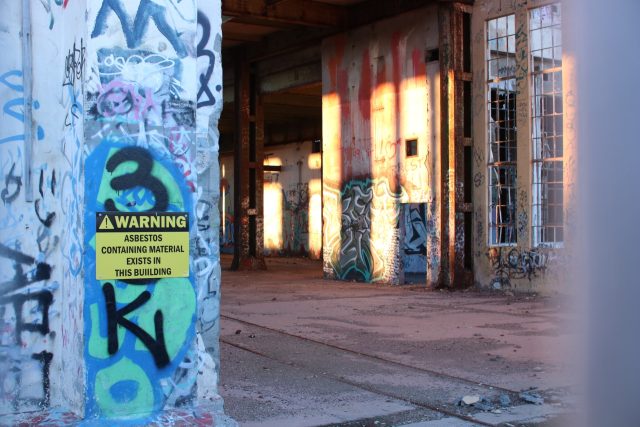
The health risks associated with asbestos are well documented and exposure remains a concern. Understanding who is at risk of asbestos exposure is pivotal in preventing the development of asbestos-related diseases.
This blog will discuss the diverse groups that face potential asbestos exposure, whether through occupational, environmental, residential, or historical contexts.
From workers in high-risk industries to communities near asbestos sources, recognising who is at risk is essential for implementing protective measures and ensuring the well-being of individuals and communities alike.
Occupational Exposure
Occupational asbestos exposure is a significant concern due to the heightened risks workers face in various industries and job roles. Here are the specific groups within the workforce who are at risk of asbestos exposure.
Workers in High-Risk Industries
- Asbestos Mining and Processing: Miners and workers in asbestos mines and processing plants are at the highest risk of exposure due to direct contact with asbestos fibres during extraction and processing.
- Construction and Insulation: Workers involved in the installation or removal of asbestos-containing building materials, such as insulation, roofing, and flooring, face substantial exposure risks.
- Shipbuilding and Naval Industries: Shipyard workers, including welders, pipefitters, and electricians, have historically been exposed to asbestos during the construction and repair of naval vessels.
- Automotive Industries: Mechanics and auto workers may encounter asbestos in brake linings, gaskets, and clutches, particularly in older vehicles.
- Aerospace and Aviation: Aircraft maintenance workers and those involved in aerospace manufacturing may be exposed to asbestos in insulation and heat-resistant materials.
Construction and Renovation Workers
- Demolition Workers: Demolition of older buildings can release asbestos fibres into the air, posing a significant risk to workers tearing down structures.
- Construction Trades: Carpenters, plumbers, electricians, and roofers who work with older structures may encounter asbestos-containing materials during their projects.
- Renovation and Remodelling: Workers who renovate or remodel older homes or buildings may unknowingly disturb asbestos-containing materials, leading to exposure risks.
Industrial Maintenance Personnel
- Factory and Plant Maintenance: Maintenance workers in industrial facilities may come into contact with asbestos-containing equipment, machinery, or insulation during their routine tasks.
- Utility Workers: Those responsible for maintaining utility infrastructure, including pipelines and electrical systems, may encounter asbestos-containing materials in older installations.
- HVAC Technicians: Heating, ventilation, and air conditioning (HVAC) technicians may be exposed to asbestos in insulation materials commonly found in HVAC systems.
Environmental Exposure
Environmental asbestos exposure is a risk for individuals and communities living near asbestos sources or facing asbestos release due to natural disasters. Here are the risks associated with environmental asbestos exposure in assemblies and during natural disasters.
Communities Near Asbestos Sources
- Proximity to Asbestos Mines: Communities located near asbestos mining areas or processing facilities may be exposed to asbestos through asbestos fibres released into the air, soil, or water.
- Asbestos-Contaminated Sites: Areas with abandoned or poorly managed asbestos waste sites can pose a significant risk to nearby residents if asbestos fibres become airborne or leach into the environment.
- Industrial Zones: Communities near industrial zones where asbestos-containing materials are produced or used may experience environmental asbestos exposure if proper containment and disposal measures still need to be implemented.
Natural Disasters and Asbestos Releases
- Hurricanes and Tornadoes: Natural disasters like storms and winds can damage buildings containing asbestos, releasing fibres into the air. Residents and emergency responders may face asbestos exposure during rescue and clean-up efforts.
- Fires: Asbestos-containing materials used in construction and infrastructure can release fibres when exposed to fire. Firefighters and nearby residents are at risk of inhaling asbestos during firefighting and post-fire clean-up.
- Floods: Flooding can damage asbestos-containing materials in buildings, releasing asbestos into floodwaters and nearby areas. This poses risks to both residents and emergency responders.
Residential Exposure
Homeowners and family members of individuals working in high-risk occupations are at risk of residential exposure to asbestos.
Homeowners and DIY Renovators
- Renovation and Remodelling: Homeowners undertaking DIY renovation or remodelling projects in older homes may inadvertently disturb asbestos-containing materials. Familiar sources of asbestos in residential settings include insulation, flooring, ceiling tiles, and pipe insulation.
- Home Insulation: Some older homes may have asbestos-containing insulation materials, which can release fibres if damaged during renovations or maintenance.
- Exterior Siding: Asbestos-containing siding materials were used in the construction of houses, particularly before the mid-20th century. Replacing or repairing such siding can lead to asbestos exposure.
- Fireplaces and Stoves: Asbestos was often used in insulation for fireplaces and wood-burning stoves. DIY maintenance or repairs of these appliances can disturb asbestos.
- Popcorn Ceilings: Popcorn ceilings are a popular design feature, frequently containing asbestos. Removal or disturbance of these ceilings can release asbestos fibres.
Family Members of At-Risk Workers
- Take-Home Exposure: Family members of individuals working in high-risk asbestos occupations, such as construction or manufacturing, can inadvertently bring home asbestos fibres on their clothing, skin, or personal belongings. This can expose family members to asbestos, particularly children, who may come into close contact with contaminated items.
- Washing Work Clothes: Laundering work clothes contaminated with asbestos fibres can release the fibres into the home environment, putting family members at risk.
Historical Exposure
Historical asbestos exposure encompasses individuals who may have encountered this hazardous material in older buildings and those who have previously worked with asbestos.
Legacy Asbestos in Older Buildings
Construction Materials: Many buildings constructed before awareness of the risks contain asbestos-containing materials insulation, roofing, flooring, and ceiling tiles.
Popcorn Ceilings: Popcorn ceilings, popular in the mid-20th century, frequently contained asbestos for texture and fireproofing. Residents of older homes may have been exposed to asbestos when renovating or living with these ceilings.
Pipe Insulation: Asbestos pipe insulation was commonly used in older buildings for heat resistance. Maintenance workers and residents may have encountered asbestos when working with or near these materials.
Vermin Extermination: Asbestos-containing vermiculite insulation was used in attics and walls, and some individuals may have been exposed while addressing vermin issues.
Former and Retired Asbestos Workers
Occupational Exposure: Individuals who worked directly with asbestos-containing materials in high-risk industries, such as mining, construction, shipbuilding, and manufacturing, faced significant occupational exposure during their careers.
Asbestos Workers: Those involved in asbestos removal, reduction, and insulation installation, including asbestos workers and contractors, have a history of close contact with asbestos materials.
Retired Workers: Even after retirement, individuals who have previously worked in industries associated with asbestos may still encounter health hazards due to the extended period it takes for asbestos-related illnesses to develop.
Conclusion:
Asbestos exposure is a pervasive concern that spans various contexts and groups, with potential health consequences that can manifest long after initial exposure.
Occupational exposure presents significant risks for workers in high-risk industries, while environmental exposure can affect communities living near asbestos sources or facing natural disasters. Within residential settings, homeowners and family members of at-risk workers must be vigilant to avoid asbestos exposure during renovations or through second-hand exposure.
Historical exposure linked to older buildings and former asbestos workers underscores the persistent nature of this concern. Vigilance, asbestos awareness courses, and proactive measures are essential to mitigate the risks associated with asbestos exposure and safeguard the health and well-being of individuals and communities alike.













